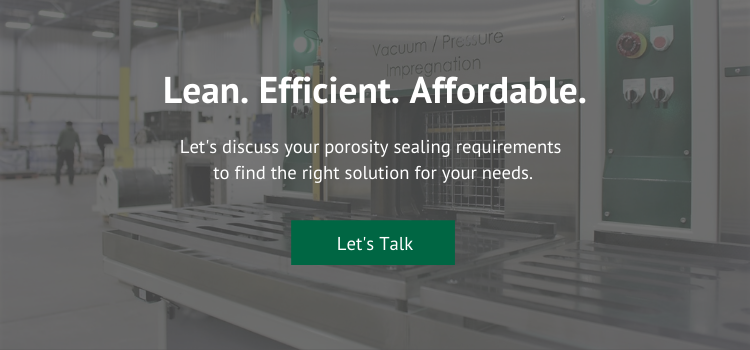A major benefit to manufacturing with powder metal is that parts are made to near net shape. Often, machining is thus only a secondary operation for improving shape precision and surface quality.
However, powder metal can be susceptible to porosity (Image 1). Porosity is any void within the part where there should be material. And while it occurs naturally, the porosity is often the root cause of specific powder metal machining issues.

Although parts may need only a small amount of machining, porosity can create unforeseen costs, thus causing production to be less profitable. This piece will explain the machining problems caused by porosity and how vacuum impregnation can be employed to eliminate these problems.
Problems Porosity Causes for Powder Metal Machining
While powder metal creates parts at net shape, certain features or finishes often need to be machined. Porosity can cause two primary machining challenges.
Poor Surface
As the tool cuts through the part, it will encounter the porosity. This interaction will create a built-up edge (BUE) because the tool will accumulate material as it drives into the porosity. The BUE will change the geometry of the part’s surface and the tool (Image 2).
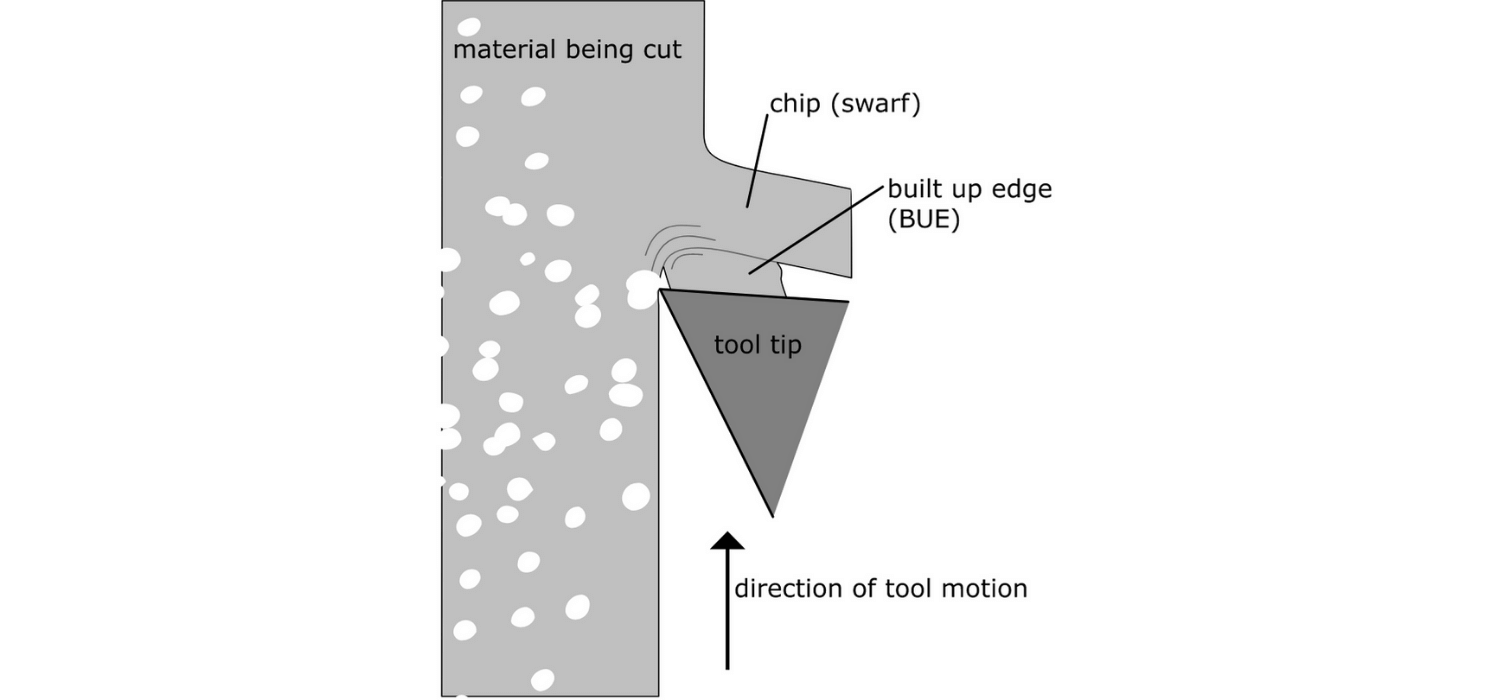
Image Source: Indrek, Fede. Campana
Poor Tool Life
Powder metal porosity significantly changes the machining process. The most significant effect is that cutting becomes intermittent rather than continuous. This is because the tool edge breaks from the surface into the porosity (Image 3). The successive sequence of small impacts into the cutting edge causes rapid tool failure.
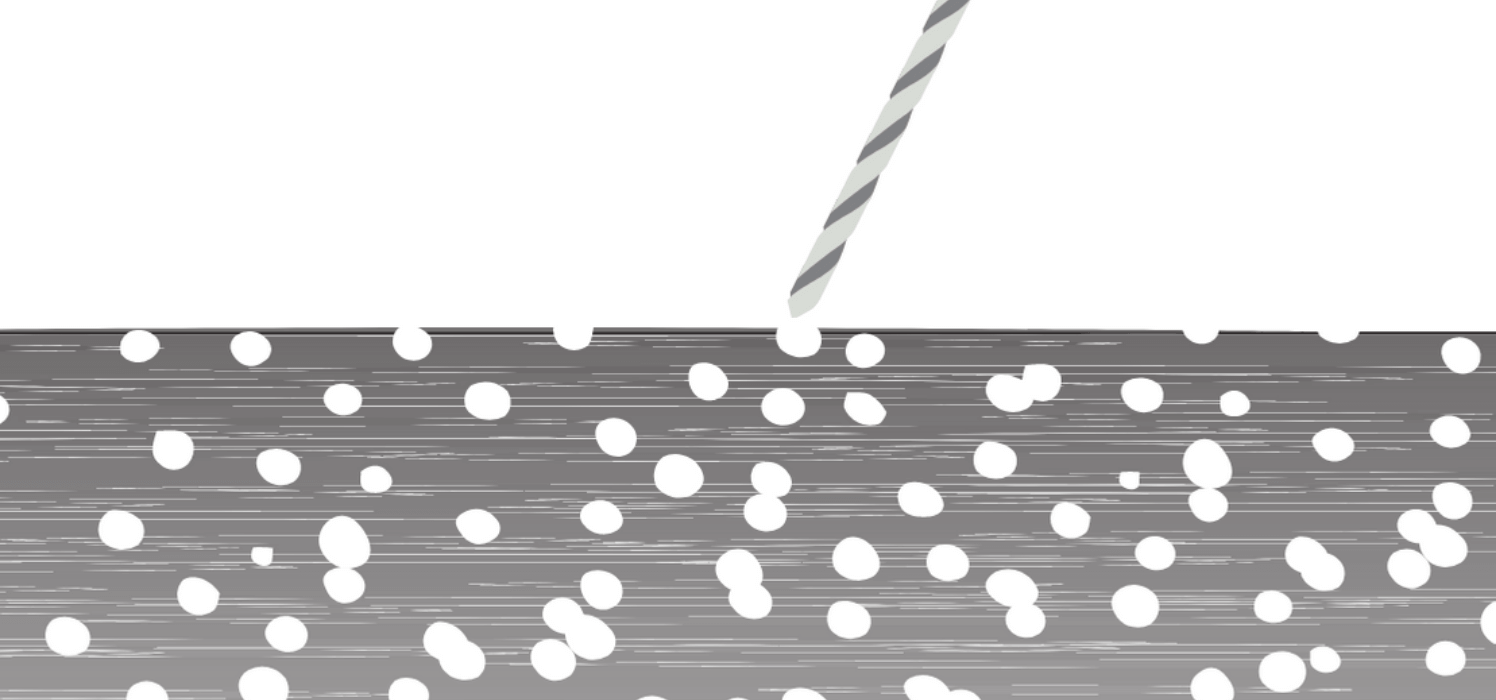
Porosity also reduces powder metal’s thermal conductivity by increasing the part’s surface and tool’s temperature. This happens because the interconnected porosity provides a leak path for any cutting fluids to escape from the part surface. The lack of fluids reduces the ability to cool, lubricate, and wash cutting chips from the cutting edge. This temperature increase will accelerate tool wear and harden the part.
How Vacuum Impregnation Improves Powder Metal Machining
Treating a part with vacuum impregnation before machining eliminates the interaction of the tool and the porosity (Image 4). This allows the tool a continuous cut against the surface, which will improve the surface finish and preserve the tool life. Also, sealing the leak path stops the fluids from escaping. The machining fluids can cool the cutting tool and wash cutting chips properly.
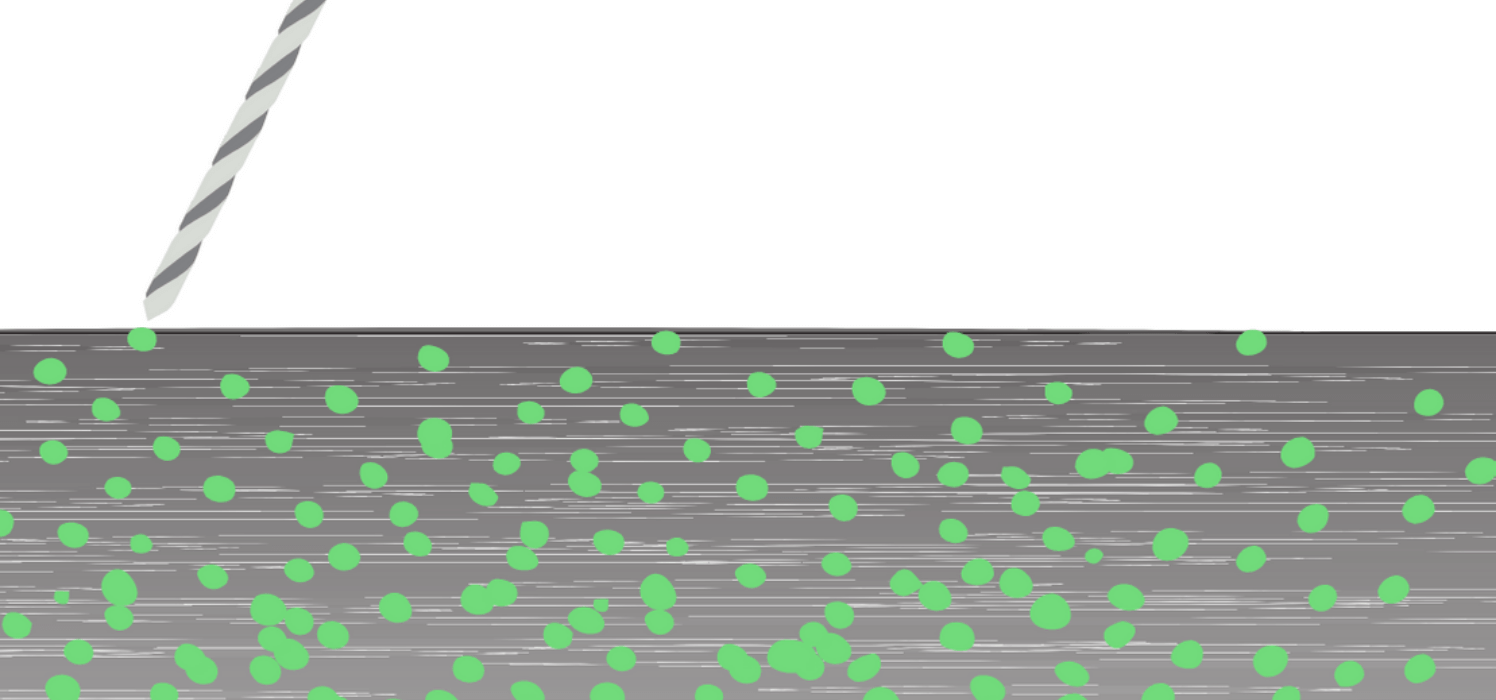
What is Vacuum Impregnation?
Vacuum impregnation is a manufacturing process that can be performed to seal porosity in powder metal parts. Specifically, a sealant is injected, under pressure, into the internal, interconnecting path of the porosity that breaches the part’s wall. The process is performed between sintering and machining to avoid any sealant degradation due to the sintering process heat. The process does not alter the appearance, dimensions, or functionality of the part.
When done correctly, one cannot tell just by looking at the part if it was impregnated. The only way to determine if a part was impregnated is through pressure testing. There are no dimensional changes. There is no residual sealant left on the surfaces, machine features, blind holes, and taps (Image 5). Only the sealant drawn into the leak path remains in the part. And while vacuum impregnation will aid in machinability, it is not a lubricant. Because there is no remaining sealant on the part’s surface, it will not prevent contact of the powder metal part with other parts or materials.
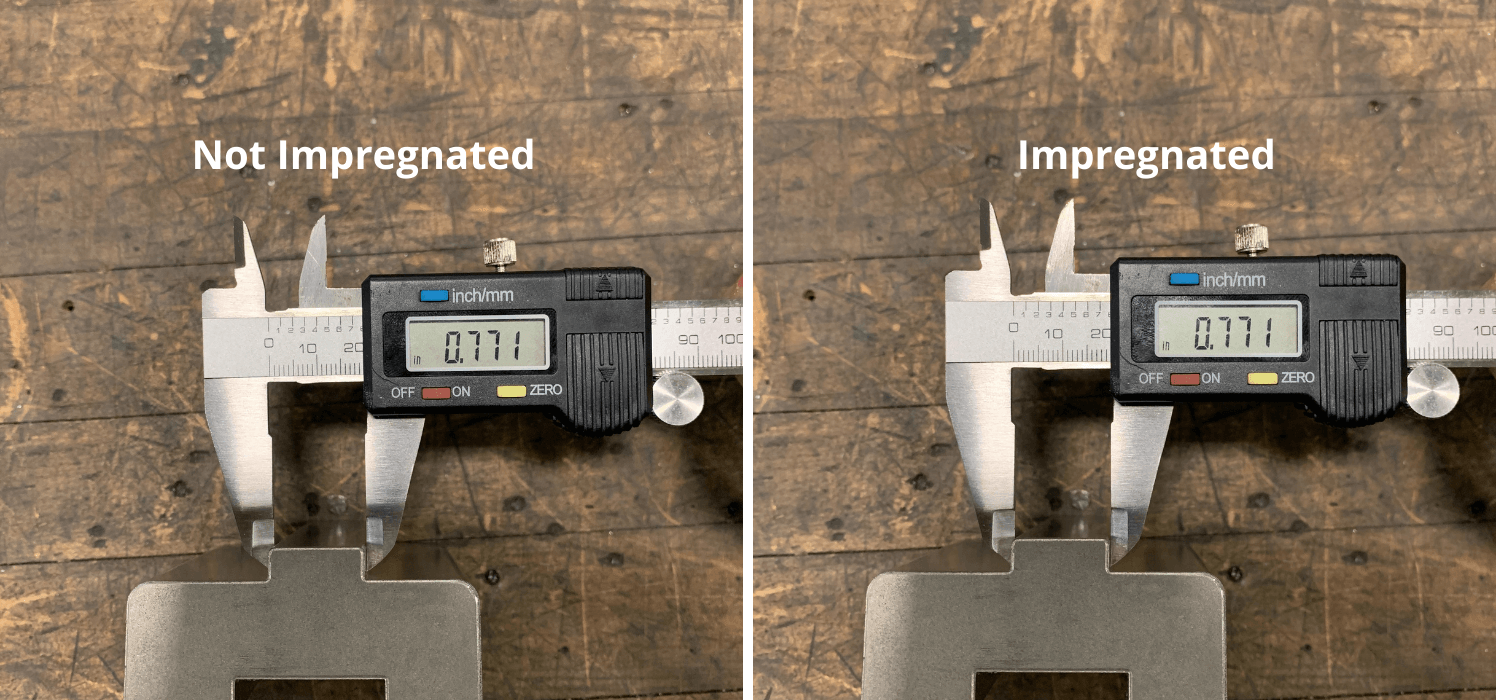
Additional Benefits to Vacuum Impregnation
Pressure Retention
Interconnected porosity creates a leak path. This allows any fluids to pass through the part and prohibits the part from being pressure tight. Vacuum impregnation seals the leak path and allows the part to be pressure-tight.
Watch: Understanding the Vacuum Impregnation Process
Improve Secondary Finishing
The porosity within a part will create failure modes that could develop from outgassing, chemical compatibility, or bleed out of pretreatments. Done before finishing, vacuum impregnation will ensure that all leak paths are sealed while safeguarding and enhancing the finish quality (Image 6).
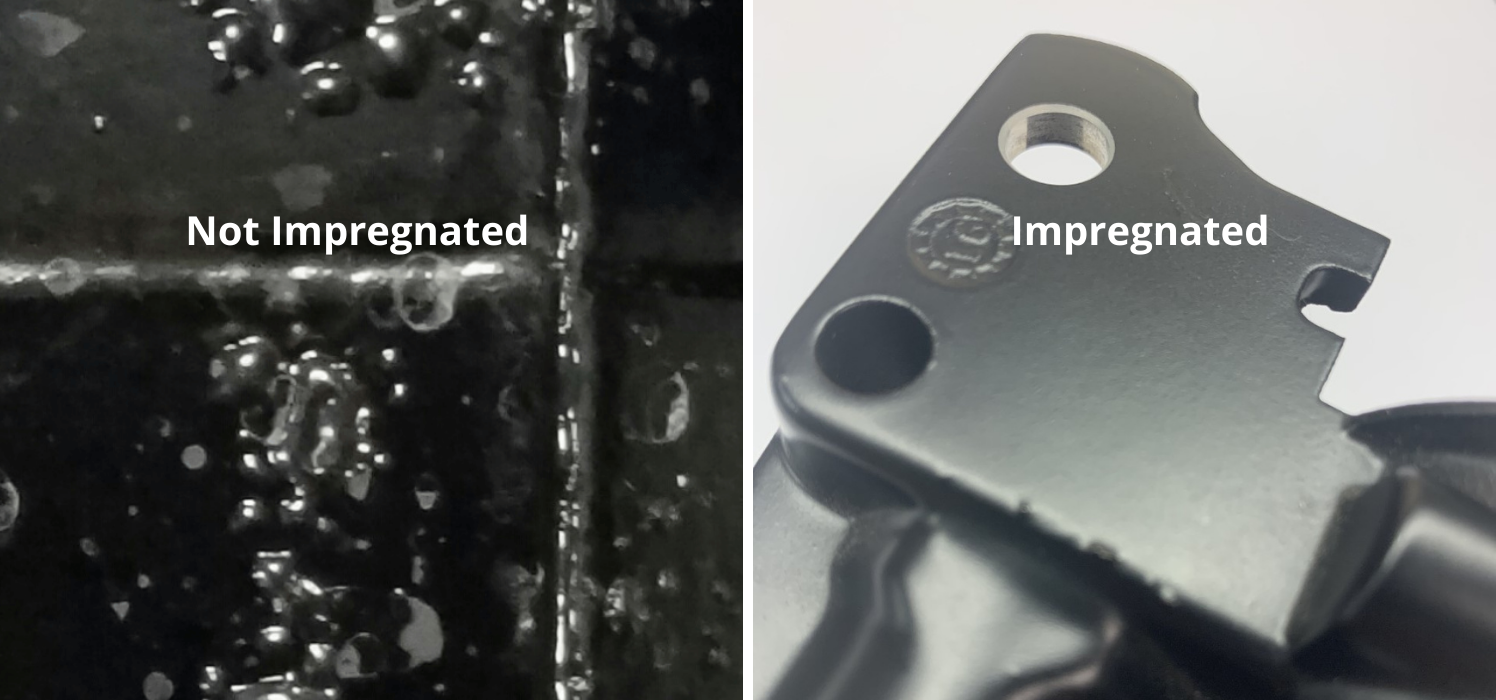
Vacuum impregnation will safe guard and enhance the surface finish.
In Summary
Porosity hinders powder metal machining. Sealing the porosity with vacuum impregnation allows machining to be continuous rather than intermittent. This improves the powder metal surface finish, machining tool life, and reduces operating costs.

